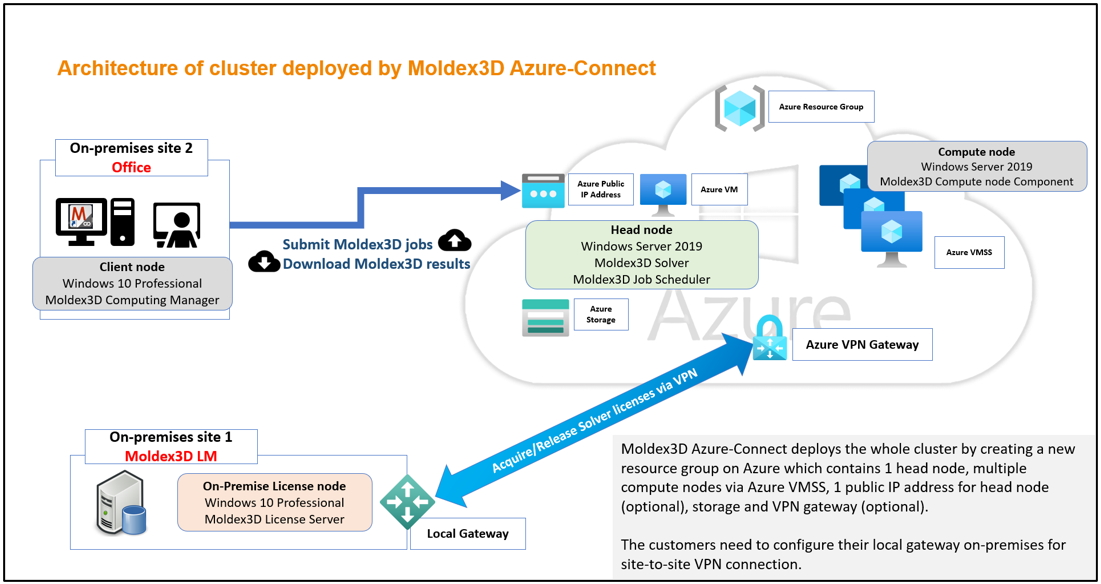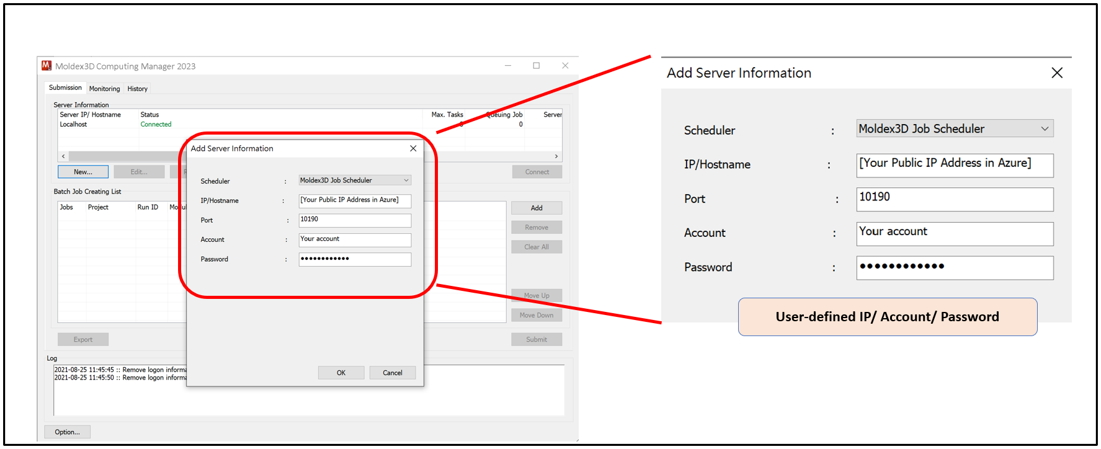Seifer Lin, Technical Manager at Product Division of CoreTech System (Moldex3D)
The Current Industry Challenges
The pursuit of high-performance computing is endless as we strive to improve the accuracy of true 3D molding flow analysis results while also reducing the time to obtain analysis results.
However, a self-built computing cluster requires not only investing in manpower to regularly update computer hardware, but also installing and maintaining software and hardware. The utilization rate of the cluster is also an important factor to consider. A cluster with a small scale may not be able to afford the computational demand during peak periods of analyzing large amounts of projects. However, a cluster with a large scale may result in computer idle time and increased costs during off-peak periods. In addition, when personnel are traveling and require access to company computing clusters for analysis, there will be costs associated with security of network channels and sufficient network bandwidth for uploading and downloading analysis projects.
The Description of Skills
Cloud Computing
Cloud computing is the on-demand delivery of IT resources over the Internet, utilizing a pay-as-you-go pricing model. With cloud computing, you don’t need to purchase, own, and maintain physical data centers and servers. Instead, you can access technology services from cloud providers as needed, such as computing power, storage, and databases. The top three cloud providers globally are Amazon (AWS), Microsoft (Azure), and Google (GCP). By creating a computing cluster in the cloud environment, we can move computing resources from on-premises to the cloud, paying only for what we use without having to worry about hardware depreciation. The cloud computing cluster can also be immediately deleted when it is no longer needed.
Infrastructure as Code
All resources in cloud environments can be represented as code, and we can create templates that specify the required infrastructure for a computing cluster, including network architecture, node machine types and quantities, and site-to-site VPNs, among others. The same template, regardless of how many times it’s deployed, will result in an identical computing cluster architecture, making it suitable for automated deployment and avoiding the time costs associated with manual deployment.
BYOL, Bring Your Own License
To run commercial software in a cloud environment, licensing is required. One way to accomplish this is to establish a site-to-site VPN connection between the cloud-provided VPN gateway and the on-premises VPN gateway, allowing the commercial software running on the cloud to connect to the on-premises license server. The site-to-site VPN connection is encrypted to ensure the security of transmitted content.
How to Use Molding Simulation Software to Solve Problems
To simplify the complex process of deploying computing clusters in a cloud environment, Moldex3D offers Cloud-Connect to assist customers with automatic deployment. After the deployment is complete, users can submit jobs using the Computing Manager, which follows the same process as submitting jobs to an on-premises computing cluster. The Moldex3D Cloud-Connect-deployed computing cluster supports automatic node power on/off and auto-scaling. During deployment, users can specify the maximum and minimum number of computing nodes. When the number of submitted jobs increases, the Moldex3D Job Scheduler continuously creates new computing nodes according to the required resource quantity until the upper limit is reached. When the workload decreases, computing nodes will be deleted until the quantity reaches the lower limit, and idle computing nodes at the lower limit will be automatically shut down to minimize costs.
Cloud-Connect currently supports the three major cloud providers, AWS, Azure, and GCP (End of 2023). The product names are Azure-Connect, AWS-Connect, and GCP-Connect, respectively, and users only need to have an AWS, Azure, or GCP account to proceed with the automated deployment. The following diagram shows the cloud computing cluster architecture for Azure-Connect deployment.

The users can utilize the same Computing Manager interface on-site to submit jobs to any on-site or cloud computing cluster (see figure below).

Conclusion
Cloud computing configures high-performance computing resources in a cloud environment, allowing on-site users to perform real 3D molding analysis with just an internet connection, and without the need to set up infrastructure or physical space for building computing clusters, nor consider hardware depreciation. With Moldex3D Cloud-Connect, a cloud cluster can be established quickly and efficiently from scratch, and the number of computing nodes can be automatically adjusted based on the workload to achieve cost-performance optimization.